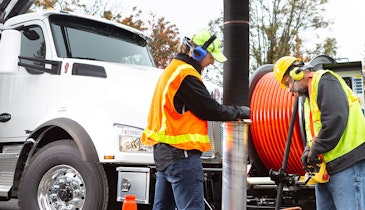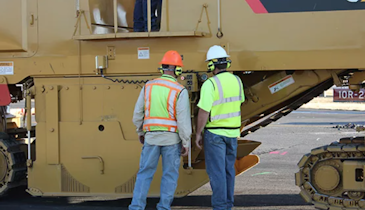Our professional workers in the trades continue to step up to the enormous challenge of maintaining our national infrastructure. All sorts of available tools and equipment have evolved over the years to assist these crews in public works, construction and utilities. And now there are drones.
Don’t expect drones to replace skilled jobs in these sectors. But like any tool of the trade, drones offer benefits that make their use attractive, especially as technology improves. The following are a few benefits.
Safer work
There’s an inherent risk when working in rugged areas, near energized equipment or while hanging from poles, towers and buckets. As drones have entered the scene, crews are now able to get needed views while remaining on the ground. Whether it’s mapping the miles of sewer and power lines or assisting with recovery efforts after a natural disaster, these whirring aerial devices can take the lead on visual inspections.
More efficient with drones
Drone crews report spending much less time on site than a conventional response team would. Setup is much simpler and can be as easy as a flight operations crew arriving in one vehicle. And the work can often be done without having to control or close a traffic lane or intersection. Coordinating fewer field assets frees up those resources for other projects.
More usable information is a notable outcome of drone work. Consider the value of being able to click on an image and get a bird’s-eye view of a job site, with the ability to zoom in and locate a single power pole or exposed pipe in more detail. High-resolution pictures and videos can be GPS-tagged on a digital map and accessed via a web browser from multiple devices. It sure beats a spreadsheet in a file cabinet.
A broader, aerial view can help you with construction project status, checking work progress on a weekly basis to share with stakeholders; tracking safety concerns and known site hazards for documentation and insurance coverage; and real-time traffic monitoring during an evacuation before a storm.
Drones are cost effective
Drones provide an energy-efficient alternative on projects that have traditionally employed specialized vehicles like helicopters, cranes and bucket trucks. Having the ability to access hard-to-reach locations is a plus. Being able to do it with fewer people and less equipment is even better.
Notable drone features being employed:
-Unmanned aerial vehicles are pilotless drones being used in land surveying and site inspections, with laser 3D imaging options available.
-Structural inspections on buildings and power generating dams use thermal sensors to monitor cracks, leaks and unusual temperatures.
-Helpful flight controls, like Return to Home, an automated feature directing the drone to safely land if connection is lost.
Communication is key
Maintaining a verbal connection among your drone crew keeps the mission on track. Real-time communication allows spotters to provide needed information for the pilot.
Some features that are standard for a flight crew include a portable system that’s contained in a hard-sided case, charged up and ready to go; listen-through feature built in that enables situational awareness when working in busy or dangerous settings; and radio integration to keep you connected with other crews you’re working with on their radio network.
To learn more, check out how Sonetics wireless team communication can help your crew be more efficient.
Sonetics creates wireless communication solutions that enable natural conversation in challenging environments. Building on a platform of collaboration and rugged performance, the company’s team communication systems deliver a productive, safe and enjoyable work experience. With more than three decades of experience, Sonetics Corp. and its Sonetics, Flightcom and Firecom product brands deliver innovative solutions to customers, transforming the way they work.
800-833-4558 | sales@soneticscorp.com





